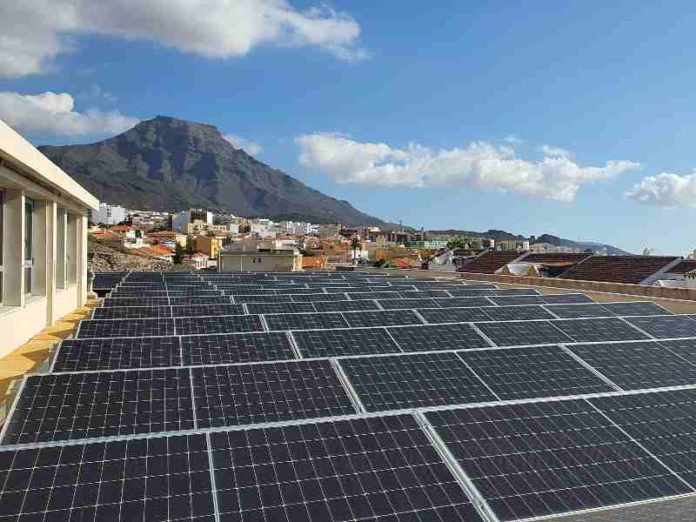
Adeje Verde. Courtesy E.ON
German electric utility E.ON and Adeje, a municipality in southwest Tenerife, are making a joint contribution to decarbonisation and establishing an energy community called Adeje Verde.
The Spanish solar circle connects up to 200 consumers to a solar photovoltaic (PV) production unit within a 500m radius. The solution will enable residents and local entities to produce, share and collectively use renewable electricity. The objective is to supply Adeje with up to 100% energy from local renewable sources in the future.
The pilot project aims to establish the first self-consumption energy community in Europe with a citizen involvement approach.
Several local ‘solar circles’ will be installed in the municipality of Adeje. Each solar circle will be equipped with a roof PV plant at its centre run by a prosumer (both producing and consuming energy).
Each PV system will provide solar power for neighbours (consumers) within a 500m radius. The first PV system was installed on the rooftop of Adeje’s music school.
To date, about 200 households will begin to collectively receive energy from the plant in August 2022; a market share of 14% in the pilot solar circle. The school’s PV produces up to 149,200KWh per year. And according to E.ON, estimates show it will reduce CO2 emissions by 116 tons annually.
Energy community regulations
The initiative is based on the new Electricity Market Directive of the 2019 EU Clean Energy Package, which indicates that excess solar PV energy no longer needs to be fully fed back to the grid but can instead be passed on to neighbours at a reduced rate.
This new regulation provides the basis for the project to establish the first energy community in Spain´s Canary Islands. E.ON has stated they will use best practices learned from Germany (Stadtwerke model), the Netherlands and Sweden to inform the project.
Luis Hernandez, head of energy communities and networks at E.ON Innovation, says: “We’ll enable green energy to meet people’s power: in Adeje, we are creating the first community that corresponds to the new European guidelines, which will be applied throughout Europe in the coming years. Spain is a front-runner with this new regulation, and therefore an ideal place for a pilot project as a blueprint for other pan-European approaches that enable citizens to contribute to a faster, sustainable and more affordable energy transition.”
Mayor of Adeje, José Miguel Rodríguez Fraga, added: “To protect our environment sustainably, we in Adeje are working towards changing attitudes and raising awareness – both among our residents and the many who choose Costa Adeje as their holiday destination. A more sustainable future is only possible by pursuing shared goals and benefits. The Adeje Verde energy community is an important lever for us.”
In parallel, E.ON will work on extending the availability of new PVs across Adeje, expanding the community by installing more solar circles. This will enable people who don’t have space for their own PVs to enjoy the benefits of solar energy and begin their sustainability journey.
EU sustainable islands
The initiative comes in at a time when although many EU islands have excellent conditions for producing renewable energy, they often lack the infrastructure.
Energy storage and lower grid capacities present significant challenges, forcing most islands to import fossil fuel sources from the mainland. Because of this, islands offer an ideal testing ground for future energy systems.
Tenerife secures 79% of electricity from fossil fuels. This is unsustainable and expensive, with electricity prices up to ten times those on mainland Spain. The Canary Island government is trying to break this model, transitioning all islands to 100% renewable sources by 2040.
For this, the Adeje Verde is expected to act as a pilot, demonstrating how the rest of the region can produce and use sustainable energy.
According to E.ON, there is immense potential for solar circles. The utility stated that if 20% of European citizens were part of a local energy community like that in Adeje Verde, 6,400,000 tons of CO2 emissions could be saved annually. This is equivalent to removing 25,600,000 combustion engine cars from European streets.